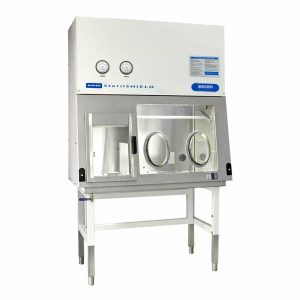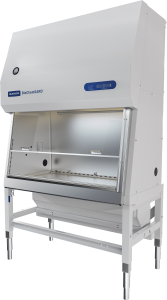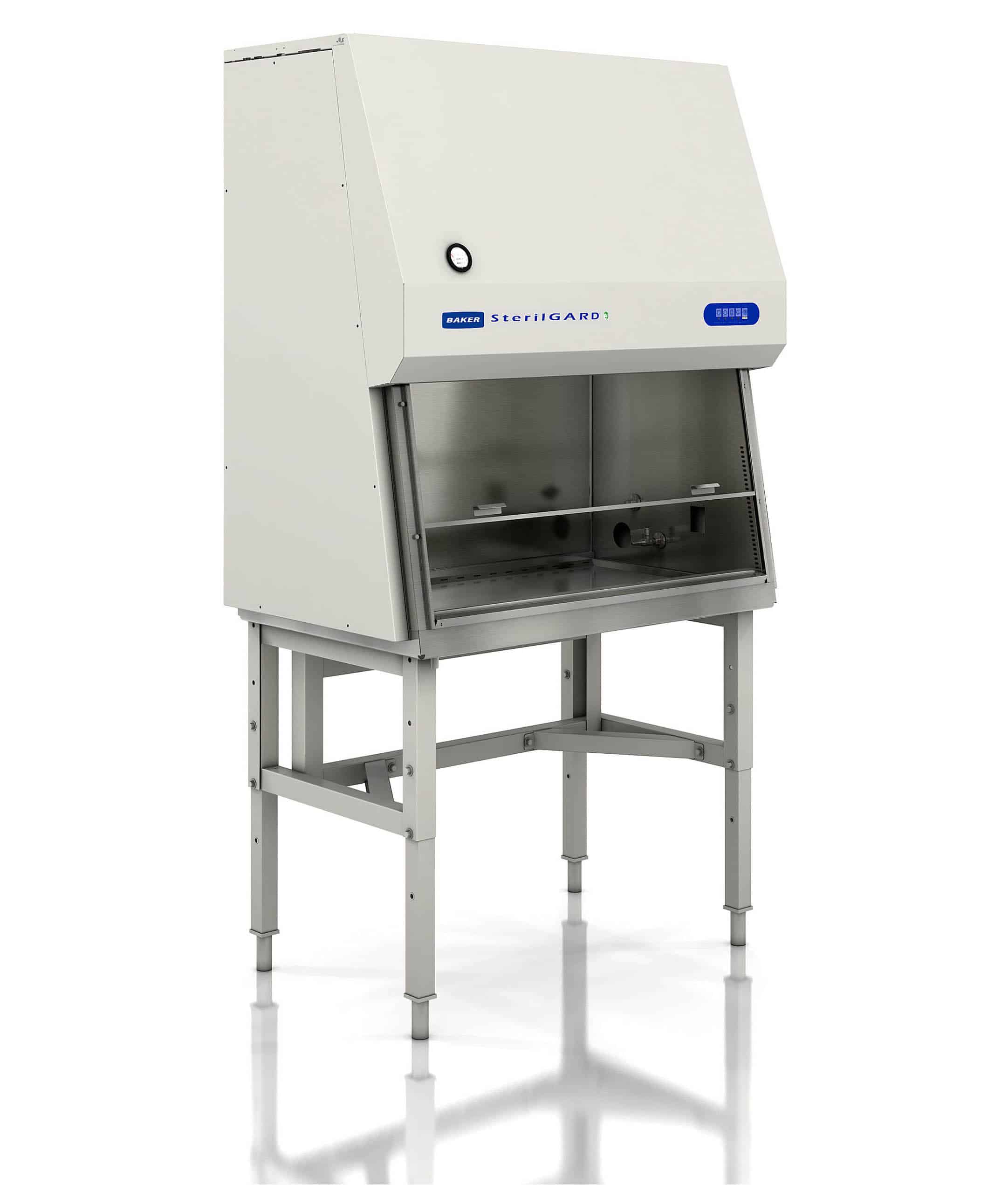
Understanding the USP <797> and USP <800> Standards: Policies, Procedures and Equipment in Sterile Compounding
The implementation of the United States Pharmacopeia (USP) <797> and USP <800> guidelines has transformed the approach to sterile compounding of potentially hazardous chemotherapies and biotherapies in hospital environments and compounding pharmacies. USP <797> predominantly issues directives to ensure precision and contamination-free procedures during the compounding of sterile products. Conversely, USP <800> delivers advice for the safe manipulation of hazardous drugs and focuses on the protection of healthcare workers, the facility environment, and patients who are exposed to these potential high-risk medications.
The National Institute for Occupational Safety and Health (NIOSH) further elaborates on what is classified as a “hazardous” drug. The NIOSH definition relies on six characteristics: cancer-causing potential, teratogenicity or developmental toxicity, reproductive toxicity, low-dose organ toxicity, genotoxicity, and molecular similarity to another hazardous drug. NIOSH also sorts hazardous drugs into three groups: antineoplastic drugs, non-neoplastic hazardous drugs, and drugs with reproductive effects.
It’s important to note that NIOSH’s focus is on FDA-approved hazardous drugs. However, healthcare facilities might also handle other dangerous substances. Adhering to the hazard communication standard developed by the Occupational Safety and Health Administration (OSHA) is crucial in these cases. This regulation obligates employers to develop a method for identifying and communicating about any hazardous chemicals that employees could encounter during their work.
While USP <800> doesn’t specify whether to use a biological safety cabinet (BSC) or a compounding aseptic containment isolator (CACI) for compounding hazardous drugs (HDs), both pieces of equipment have similar usage conditions. These include requirements for personal protective equipment, facility design, air quality, negative pressure, using a closed system drug-transfer device, cleaning procedures, and USP <797> beyond-use dating (BUD).
When choosing a primary engineering control (PEC), several factors should be considered:
- The costs of acquisition, maintenance, power, and specialized supplies.
- The procedure for product entry and preparation exit.
- Ergonomics for both low-volume and high-volume compounding.
- The convenience of preparing multiple doses at once.
- The ease and cost of certification.
- Product labeling requirements.
- Cleaning needs.
The material of the primary engineering control should be durable enough to withstand frequent cleanings with strong chemicals, such as stainless steel or high-grade plastics, while preserving its protective integrity.
The design and testing standards are also important. BSC designs are verified by NSF International/American National Standard and undergo field testing, while CACI design specifications don’t require verification, with manufacturers providing testing standards for field-testing.
All primary engineering controls are designed to run continuously. Frequently turning the devices on and off might affect the device’s lifespan and change the pressure gradients within the secondary engineering control. Some systems might require a purge time to align with manufacturer’s specifications before use.
USP <800> advises using specific types of BSCs for hazardous drug sterile compounding, including Class II, Type A2; Class II, Type B2; and Class III. BSCs offer three types of protection: operator, product, and environmental. NSF International provides minimum standards for cabinet classifications and certification.
Considering these aspects, healthcare institutions can make informed decisions about the best primary engineering control for their needs, ensuring safety while following USP <800> and <797> standards.

Understanding the Classification and Features of Biological Safety Cabinets (BSCs) for Pharmaceutical Compounding
Biological safety cabinets are crucial for meeting the standards of USP <800> in the field of hazardous drug sterile compounding. Recommended BSCs include Class II, Type A2; Class II, Type B2; and Class III. Sites with equipment older than 10 years should verify their BSC classifications. It’s essential to remember that not all BSCs are suitable for handling highly volatile, toxic hazardous drugs like cyclophosphamide, which is why specific BSC types are recommended under USP <800>.
The primary function of BSCs is threefold: they protect the operator, prevent product contamination, and safeguard the environment from contaminants within the cabinet. These specifications align with the standards of NSF International as outlined in NSF/ANSI 49 – 2008, Biosafety Cabinetry: Design, Construction, Performance, and Field Certification.
Class II, Type A2 BSC This type of BSC is open to the operator and requires careful use to ensure protection. Given the design, which includes a movable front glass damper and a protective airflow curtain, it’s important not to block the intake grills at the front and back of the BSC. Blocking these grills can create turbulence, potentially leading to accidental exposure to hazardous drug vapors or particles. Class II, Type A2 BSCs cannot be hard-ducted to a building’s exhaust system and should interface via an open canopy. These cabinets should be installed according to manufacturer specifications to ensure proper ducting.
Class II, Type B2 BSC The Class II, Type B2 BSC, also open to the operator, shares similar airflow characteristics with the Type A2 BSC. The primary differences are that the B2 does not recirculate potentially contaminated air within the workspace and must be hard-ducted to the building’s exhaust system. As with the Type A2, all ducting must be under negative pressure and exhausted externally from the building, away from any fresh air intakes.
Class III BSC The fully enclosed Class III BSC is designed for handling infectious microbiological agents and hazardous materials. Due to its high cost, maintenance requirements, and complex operation, it is rarely used in pharmacy practice sites. All operations within this system are carried out through a glove system, and air is taken in through a HEPA filter. All ducting must be double HEPA-filtered or HEPA-filtered and incinerated, and exhausted externally from the building.
Secondary Engineering Controls (SEC): Room Configuration USP <800> also addresses the proper placement of compounding equipment within designated rooms because this affects the functioning of compounding primary engineering control (C-PEC) devices. A Class II BSC or compounding aseptic containment isolator (CACI) should be situated in an ISO Class 7 area, physically separated with a minimum of 12 Air Changes Per Hour, and a minimum negative pressure of 0.01 inches of water column to the adjacent positive pressure ISO Class 7 (or better) ante-areas. These room setup requirements ensure containment of any airborne drugs in case of spills, broken vials, or waste container off-gassing. The Class II BSC and CACI should be exhausted entirely to the outside air through HEPA filtration. In some cases, a C-PEC can be placed in a compounding segregated compounding area (C-SCA) for low- and medium-risk hazardous drugs, but with the limitation that the beyond-use date may not exceed 12 hours.

Advanced Considerations for Class II Biological Safety Cabinets in Pharmaceutical Compounding
Class II BSCs stand as essential features within the compounding environment, providing protection for operators and the environment while ensuring the sterility of compounded products. This dual protection and sterility function is achieved through HEPA filtration and directed airflow, fostering an aseptic environment for pharmaceutical product manipulation.
One of the distinguishing features of Class II BSCs is their capacity to fulfill the cleanroom-like conditions mandated for CSPs under USP <797>. Achieved via HEPA filters supplying laminar airflow, these cabinets meet Class 5 conditions as stipulated in ISO 14644-1 and 2. Because of that, Class II BSCs are ideally suited for smaller or private pharmacy facilities, which might lack the resources to maintain a dedicated cleanroom.
However, while incorporating a Class II BSC for pharmaceutical compounding, it is vital to consider a few specific factors. For instance, Class II BSCs typically use HEPA filters rated at 99.99 percent for their “most penetrating particle size” of 0.3 microns. These filters, while effective at trapping microorganisms, can be rapidly overwhelmed by larger pharmaceutical powders or aerosols, thereby shortening the filter’s lifespan. One possible solution to this issue is installing pre-filters to prolong the life of the HEPA filter, which will reduce operational and maintenance costs associated with the BSC.
The construction material of Class II BSCs also matters, as most of these units feature a stainless steel interior. This metal helps dissipate static charges that can cause powders to jump unpredictably. Additionally, stainless steel is easier to clean than other materials, enhancing the BSC’s longevity and functionality.
Moreover, integrating a bag-in/bag-out system for safe removal of HEPA filters is crucial. Given that pharmaceutical powders can’t be chemically neutralized like microbiological hazards, the bag-in/bag-out system ensures that the lab environment remains uncontaminated during filter removal.
In summary, Class II BSCs are versatile and invaluable tools in pharmaceutical compounding. Their compatibility with USP <797> standards makes them an excellent choice for both large-scale and small-scale compounding facilities. Nonetheless, it’s essential for healthcare institutions to carry out thorough risk assessments and prioritize human safety when making decisions regarding engineering controls or safety equipment. By adhering to the USP <797> and USP <800> guidelines and making informed decisions on safety equipment, healthcare institutions can establish a safe and efficient compounding environment.
ARES Scientific: Your Trusted Supplier for Pharmaceutical Compounding Biological Safety Cabinets
Navigating the complex landscape of pharmaceutical compounding requires a reliable and knowledgeable partner to ensure safety and efficiency. ARES Scientific stands out as your premier supplier for pharmaceutical compounding biological safety cabinets (BSCs). With a rich history of expertise and customer-focused service, we provide state-of-the-art solutions that align with stringent industry regulations such as the United States Pharmacopeia (USP) guidelines.
Class II BSCs, integral to compounding environments, offer invaluable protection to the operator, product, and environment. These cabinets, through a combination of HEPA filtration and directed airflow, provide an aseptic environment, critical for the manipulation of pharmaceutical products.
ARES Scientific recognizes the pivotal role these cabinets play and specializes in supplying top-tier Class II BSCs that meet industry standards. These cabinets conform to Class 5 conditions as stipulated in ISO 14644-1 and 2, making them ideal for facilities of all sizes, ranging from smaller or private pharmacy facilities to large-scale compounding units.
At ARES Scientific, we are committed to also ensuring that Class II BSs are effectively integrated into your compounding environment. We understand that each compounding setup is unique, necessitating custom considerations such as filter lifespan, construction material, and safe removal of HEPA filters. To this end, we provide comprehensive consultation services to help you optimize your cabinet setup according to your needs.
Moreover, we understand that the investment in a Class II BSC goes beyond the initial purchase. This equipment requires ongoing support for maintenance and potential upgrades. ARES Scientific stands by you every step of the way, offering expert support and maintenance services to ensure the longevity and functionality of your cabinets.
We also prioritize safety, emphasizing the integration of safety features such as the bag-in/bag-out system for the safe removal of HEPA filters. By partnering with ARES Scientific, you will receive BSCs that uphold the highest safety standards, protecting your staff and ensuring the integrity of your compounded products.
In conclusion, ARES Scientific is more than just a supplier; we are your trusted partner in pharmaceutical compounding. With our focus on providing top-quality Class II BSCs and an unwavering commitment to service, we empower your compounding facilities to maintain safety, efficiency, and compliance. Trust ARES Scientific for your biological safety cabinets needs, and let us support you in creating a safe and efficient compounding environment.
*Always consult your facility’s safety department or appropriate professionals before undertaking pharmaceutical compounding processes. Safety protocols and regulations may vary, and it is essential to ensure proper management and minimize potential hazards related to compounding activities. This article provides general information and does not replace personalized advice from qualified experts in pharmaceutical compounding.


